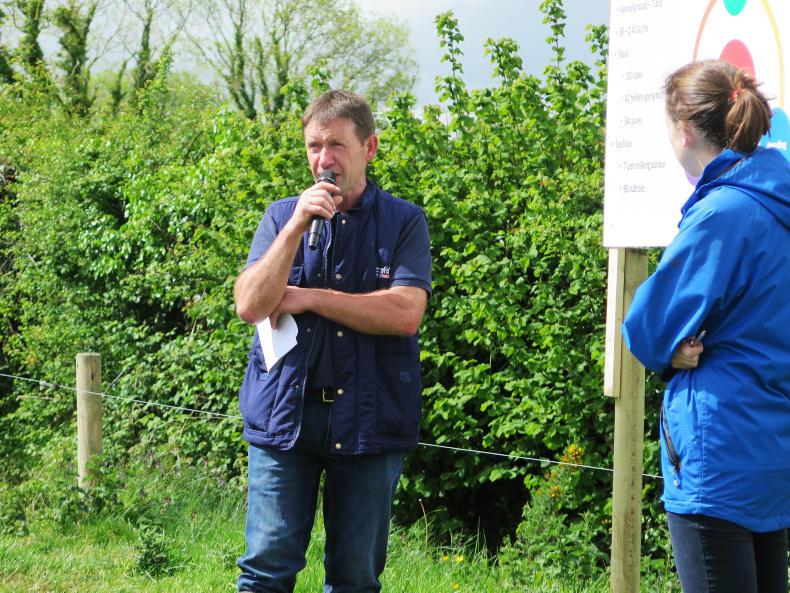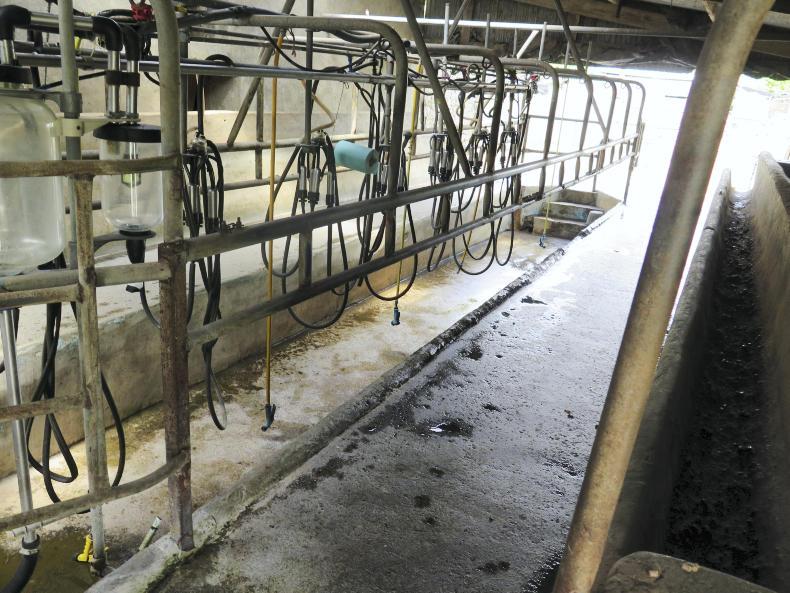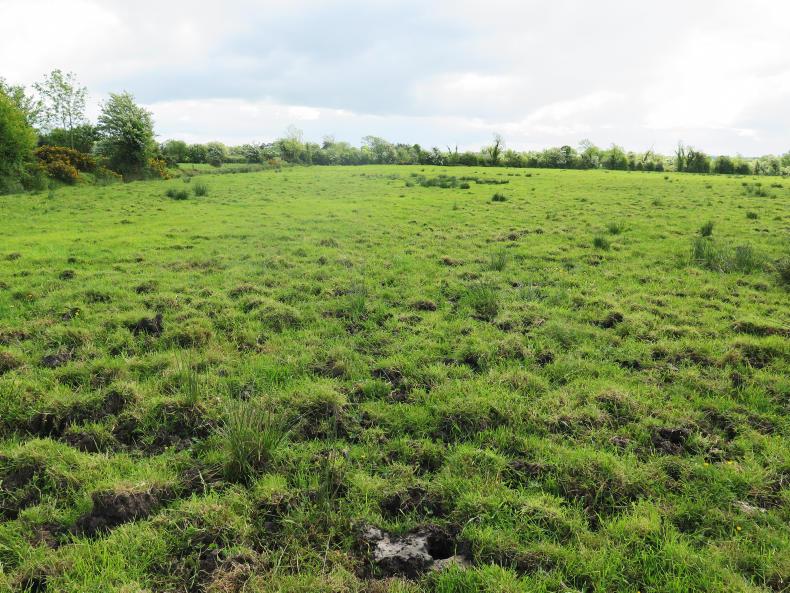Arrabawn Co-Op held a farm walk on Charlie Whiriskey’s farm in Kiltullagh, Co Galway, recently. The overriding theme of the walk was to review performance on the farm and plan for the future.
 Charlie (pictured) is one of five development farmers participating in the Arrabawn Milk for Profit programme.
Charlie (pictured) is one of five development farmers participating in the Arrabawn Milk for Profit programme.
Programme manager Aine O’Connell set the scene. Charlie is milking 100 cows on a 59ha farm at Kiltullagh near Athenry in Galway. There is 52ha on the milking block but about half of this land is heavy, peaty and surrounded by forestry. The other half is much drier but as Charlie says it still needs minding.
Charlie is an owner operator with a young family and very little hired labour being used. He reared 54 heifer calves this year and he has 41 bulling heifers. Between it all he is managing 150 livestock units more or less on his own.

On top of this, milking facilities aren’t hectic. While he has good housing with over 90 cubicles, there are only seven units in the milking parlour, so milking is taking up to 20 hours a week longer than it should be.
Spring grass
The first round of grazing ended this year on 28 April. Last year, it ended on 10 May. The target for this farm is to end the first round on 15 April so Charlie missed this target by some distance, despite getting cows out for the first time on 11 February.
“Looking back, I wasn’t aggressive enough on getting area grazed when conditions were good and I was much too late spreading fertiliser, mostly because I was too busy calving and milking and I didn’t have time.”
One bag/acre of urea was spread on 1 March on the dry paddocks only. Another bag of urea/acre was spread on the whole farm on 1 April along with two bags/acre of 0:7:30. Another bag of CAN was spread on 1 May. So most of the farm didn’t get any fertiliser until 1 April. This meant that grass growth in April was poor, even though the dry weather would have suited this heavy farm.

The bad weather in early March put a real dampener on grazing. There was 7% grazed by 1 March but only 9% grazed by 17 March and just 26% grazed by the end of March. Average grass growth for the year was 10.45t/ha in 2016 so improving this is a priority.
“I should have got a contractor in to spread the slurry and fertiliser. You’re only codding yourself trying to do too much as you end up getting nothing done right. Next year, I’m going to focus on the cows and grass and get the contractor to do the tractor work.”
The next challenge for Charlie is to better manage pre-grazing yields. Moving from grazing covers of greater than 2,000kg/ha to 1,400kg/ha made the farm an extra €12,035 in 2016. This is based on producing an extra 27kg of milk solids between April and September compared with the same period in 2015 and from a younger herd in 2016.
This was worth an extra €7,650 to the farm. He also fed less meal. Charlie spent €4,385 less on meal during April to September 2016 compared with the same period in 2015.
He achieved this by walking the farm weekly or twice a week and making decisions based on grass growth. While the farm is heavy and challenging at the shoulders, the summers are good and Charlie’s aim is to capitalise on this by doing as good a job as he can when conditions are good.
Breeding
Despite the majority of cows calving in spring, October was the only month of the year that a cow didn’t calve on the Whiriskey farm last year. The six-week calving rate was 59% in 2016 and 69% in 2017. The target is 90%. Charlie has decided to go for this and won’t calve any cows in winter this year.
There was some debate among the crowd as to whether this was actually going to reduce the workload or make him busier. Charlie’s response was clear that yes, he will have a busier February but he is shifting the current workload in April and May back to February which will free up more time then. He said he can handle this short-term pain because he knows there is a long-term gain. His goal is to have two or three weeks in April between the end of calving and the start of breeding.
Aine said there is a two-pronged approach to achieving compact calving. The first is to get all the replacement heifers calving in February. This year, Charlie started inseminating the heifers on 5 May for seven days and then gave PG to the ones not served.
The other approach is to focus on improving submission rates on the milking cows. This year, Charlie got 63% of the cows served in the first 21 days compared to 39% for the same period last year. The cows that were missed in the first round were checked by a vet.
Facilities
It was accepted by everyone that the amount of time Charlie is spending milking is reducing the performance of the farm. In order to reduce the time spent milking, a new parlour is being planned. Charlie has two options – either increase the size of the current parlour to 12 units, or build a new 20-unit parlour on a greenfield site.
Net of TAMS grant and VAT, the first option will cost in the region of €70,000 with annual repayments of €9,000 over 10 years. The second option will cost in the region of €130,000 and over a 15-year term will have annual repayments of €12,000. Considering the scale of the farm at 52ha and the potential for more cows in the future, it was accepted that the bigger parlour was the way to go.






 This is a subscriber-only article
This is a subscriber-only article













SHARING OPTIONS: